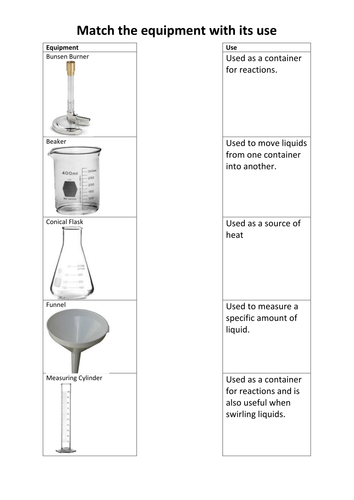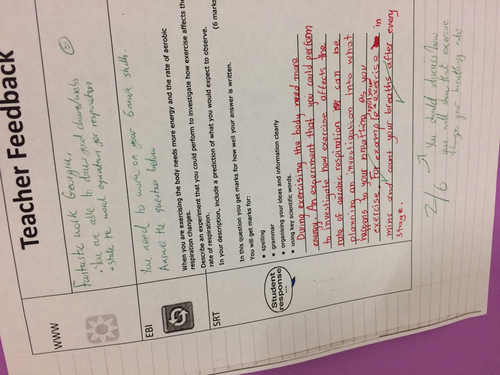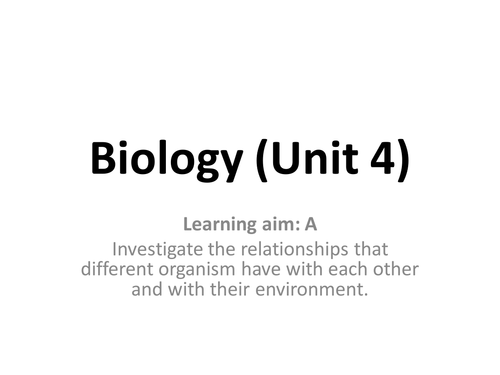243Uploads
112k+Views
55k+Downloads
Chemistry

C2.2 Electronic structure and the periodic table
AQA GCSE Sciences (9-1)
Chemistry: C2 The periodic table
Lesson 2: C2.2 Electronic structure and the periodic table
Based on the Kerboodle Resources
The AQA Kerboodle worksheet are not included so as to be acting within the TES code of conduct.
Keywords: Shells, Electronic structure, Noble gases

C4.6 Expressing concentrations
AQA GCSE Sciences (9-1)
Chemistry: C4 Chemical calculation
Lesson 5: C4.6 Expressing concentrations
Based on the Kerboodle Resources
The AQA Kerboodle worksheet are not included so as to be acting within the TES code of conduct.

C4.3 From masses to balanced equations
AQA GCSE Sciences (9-1)
Chemistry: C4 Chemical calculation
Lesson 3: C4.3 From masses to balanced equations
Based on the Kerboodle Resources
The AQA Kerboodle worksheet are not included so as to be acting within the TES code of conduct.

KS3 Science Complete Extended Writing Task (Yr7-8)
Best used just before or after finishing a topic - an ideal activity for deep marking.
Each slide contains a set of connective and also prompt ideas.
Topics included:
* Adaptation, Neutralisation, Particle theory, Detecting sound, Puberty, Drugs and health, Fossil fuels.
* Respiration, Rock cycle, Payback-time, Digestion, Diffusion, Acidification of forests, Pollination, Earth and space

C11.1 Addition polymerisation
AQA GCSE Sciences (9-1)
Chemistry: C11 Polymers
Lesson 1: C11.1 Addition polymerisation
Based on the Kerboodle Resources
The AQA Kerboodle worksheet are not included so as to be acting within the TES code of conduct.

C3.6 Properties of small molecules
AQA GCSE Sciences (9-1)
Chemistry: C3 Structure and bonding
Lesson 6: C3.6 Properties of small molecules
Based on the Kerboodle Resources
The AQA Kerboodle worksheet are not included so as to be acting within the TES code of conduct.

C3.10 Properties of metals and alloys
AQA GCSE Sciences (9-1)
Chemistry: C3 Structure and bonding
Lesson 10: C3.10 Properties of metals and alloys
Based on the Kerboodle Resources
The AQA Kerboodle worksheet are not included so as to be acting within the TES code of conduct.

C11.2 Condensation polymerisation
AQA GCSE Sciences (9-1)
Chemistry: C11 Polymers
Lesson 2: C11.2 Condensation polymerisation
Based on the Kerboodle Resources
The AQA Kerboodle worksheet are not included so as to be acting within the TES code of conduct.

Safety and Scientific Equipment (Introduction lesson 3/4)
Designed to be the third lessons for Year 7s (3/4).
Learning outcomes:
(*) Describe the use of different lab equipment.
(*) Identify the appropriate lab equipment for an investigation.
(*) Identify safety issues in an unsafe environment.
Students will learn the common equipment they will encounter in the lab and their function.
They will also learn how to measure liquids using equipment that form a meniscus.
There are also safety rules and also how to light a Bunsen Burner

KS4 Chemistry 1 Marking and Feedback Exam questions with Answers (Formative assessment)
I’ve uploaded an image of the finished product.
This should be used ideally as a formative assessment before the summative assessment.
The teacher (using your school’s designated colour) writes a WWW and relates the EBI to one of the tasks.
The student completes the task using their designated feedback pen.
The teacher follows up and marks the work with comments on how to improve.
Since each unit has four different questions of various abilities, you can also differentiate.
This pack is for Chemistry 1 and included 4 question sheet for these units:
C1 Atomic structure
C2 The periodic table
C3 Structure and bonding
C4 Chemical calculations
C5 Chemical changes
C6 Electrolysis
C7 Energy changes

C5.2 Displacement Reactions
AQA GCSE Sciences (9-1)
Chemistry: C5 Chemical changes
Lesson 2: C5.2 Displacement Reactions
Based on the Kerboodle Resources
The AQA Kerboodle worksheet are not included so as to be acting within the TES code of conduct.

C10.2 Alcohols, carboxylic acids, esters
AQA GCSE Sciences (9-1)
Chemistry: C10 Organic Reactions
Lesson 2: C10.2 Alcohols, carboxylic acids, esters
Based on the Kerboodle Resources
The AQA Kerboodle worksheet are not included so as to be acting within the TES code of conduct.

C3.1 The three states of matter
AQA GCSE Sciences (9-1)
Chemistry: C3 Structure and bonding
Lesson 1: C3.1 The three states of matter
Based on the Kerboodle Resources
The AQA Kerboodle worksheet are not included so as to be acting within the TES code of conduct.

C5.3 Extraction of metals
AQA GCSE Sciences (9-1)
Chemistry: C5 Chemical changes
Lesson 3: C5.3 Extraction of metals
Based on the Kerboodle Resources
The AQA Kerboodle worksheet are not included so as to be acting within the TES code of conduct.

C5.1 Reactivity series
AQA GCSE Sciences (9-1)
Chemistry: C5 Chemical changes
Lesson 1: C5.1 Reactivity series
Based on the Kerboodle Resources
The AQA Kerboodle worksheet are not included so as to be acting within the TES code of conduct.

C5.8 Strong and weak acids
AQA GCSE Sciences (9-1)
Chemistry: C5 Chemical changes
Lesson 8: C5.8 Strong and weak acids
Based on the Kerboodle Resources
The AQA Kerboodle worksheet are not included so as to be acting within the TES code of conduct.

C13.1 History of our atmosphere
AQA GCSE Sciences (9-1)
Chemistry: C13 The Earth’s atmosphere
Lesson 1: C13.1 History of our atmosphere
Based on the Kerboodle Resources
The AQA Kerboodle worksheet are not included so as to be acting within the TES code of conduct.

C14.1 Finite and renewable
AQA GCSE Sciences (9-1)
Chemistry: C14 The Earth’s resources
Lesson 1: C14.1 Finite and renewable
Based on the Kerboodle Resources
The AQA Kerboodle worksheet are not included so as to be acting within the TES code of conduct.

NEW BTEC First Principles of Applied science
Coursework section. Before each task I'll give a brief introduction with some questions so they get use to the knowledge in the topic. These worksheets detail the scenarios and work that should be present in their coursework. Given to students at the start - may be good to also give them a due date for each task. It is probably best to have access to laptops/pcs. GOOD LUCK GUYS *LOVELY BTEC*!!!!!!!!!

Flames test (Game of thrones)
Have strontium, copper, and iron solution in spray bottles. This will be the saliva of your dragons and they will give the distinctive colours. Now pupils perform flames test with known compounds to match up the colours and identify ions present in your dragon saliva.




















